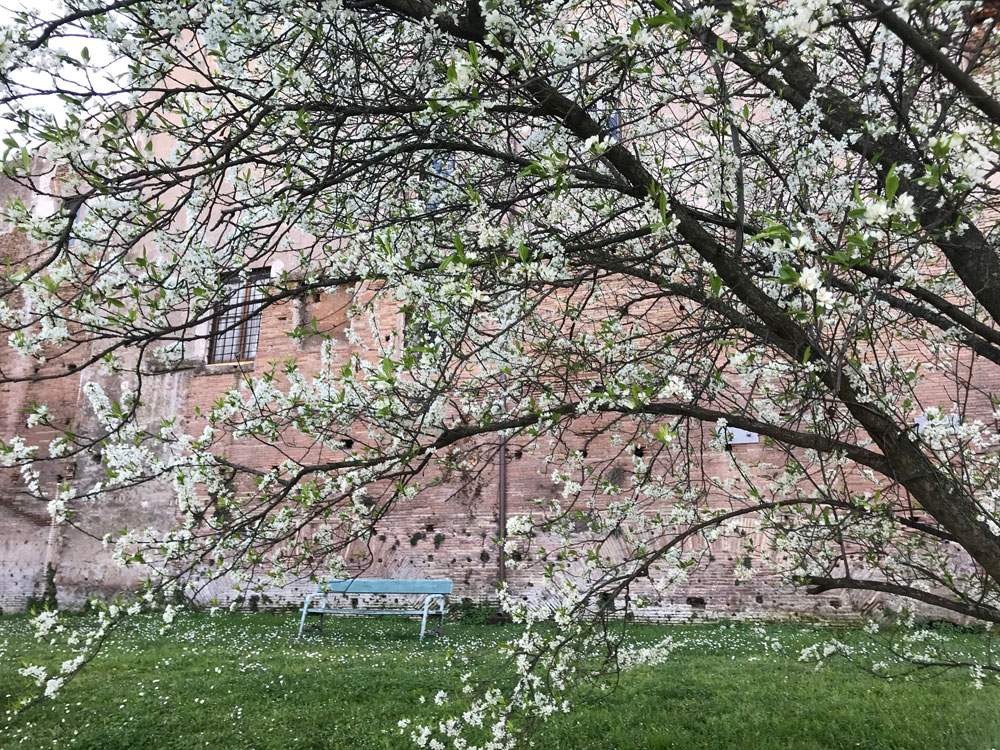On the occasion of the National Day of Landscape, from today the Colosseum Archaeological Park is presenting the Parco Green project to the public: the page www.parcocolosseo.it/parco-green, edited by Francesca Boldrighini, is online, in which it is possible to find a wide range of initiatives united by the desire to enhance the natural environment of the Park and to make a contribution to the sustainable economy in its different aspects.
“The Colosseum Archaeological Park has a unique green heritage in the world,” declares Alfonsina Russo, director of the Colosseum Archaeological Park. “For this reason, we have always been doing our utmost to protect and enhance it, making our contribution to the growth of a sustainable economy in the broadest sense, instilling in our public, and especially in the new generations, the awareness that the protection of the environment is the task of each of us.”
In fact, the Colosseum Archaeological Park is not only an archaeological site, but is also a large green area that includes the Roman Forum and the Palatine Hill and covers more than 40 hectares in the heart of the city of Rome. It is a “natural park” in which spontaneous vegetation, typical of the Mediterranean area, coexists with large trees planted in recent centuries to revive the spirit of the imperial gardens and the Renaissance Horti Farnesiani that, in successive stages, embellished the ancient hill. This green area has also been chosen as a habitat for many small mammals, reptiles, insects and birds. Therefore, since its establishment, the Park has sought not only to protect and enhance the archaeological heritage entrusted to it, but also its natural heritage, initiating numerous projects aimed at reducing environmental impact, decreasing pollution, preserving the ecosystem and biodiversity, and promoting a way of life more in accordance with our natural environment.
In particular, new attention was given to the vegetation in the Park, constantly caring for trees and shrubs and utilizing them by making the most of their natural properties, with numerous initiatives designed by architect Gabriella Strano. With the L’olio del PArCo project, carried out in collaboration with Coldiretti, the fruits of the nearly two hundred olive trees in the area are being harvested, thus producing the Palatine Oil, Extra Virgin Olive Oil, from untreated trees, already in its second year of production. Instead, the planting of an ancient native grape variety, the so-called Uva Pantastica, is planned for the coming months. The grape will be planted in the “Barberini Vineyard,” one of the areas of the Palatine used as a vineyard in the Renaissance era: it is intended to preserve and renew the link with the Park’s ancient agricultural tradition. Right at the foot of the Romulean huts, the Social Promotion Association Comitato Mura Latine, thanks to the project GRABees - The Honey of Rome, has planted four beehives and organized an environmental-educational trail on beekeeping and the production of honey called Ambrosia del Palatino. To take advantage of the purifying and anti-pollutant properties of plants, an “anti-smog barrier” made up of shrubs known for their ability to absorb particulate matter and gaseous pollutants dangerous to the environment and human health was planted on the southern slope of the Palatine on the occasion of Tree Day 2020.
The Park Green also involves the fauna of the PArCo: the SPECTIO project, curated by Andrea Schiappelli, aims to study the habits of the local fauna and avifauna in order to enhance and familiarize the public with this natural heritage as well. The first act of the project is the definition of a memorandum of understanding with Ornis Italica, a nonprofit association already present in PArCo to monitor the life of gulls, and the publication of a biweekly column on PArCo’s social pages.
However, in the PArCo the “green” approach can also be seen in the way architectural and monumental heritage is maintained and restored: there are two eco-sustainable restoration projects involving two major monuments of the Roman Forum, namely the Arch of Septimius Severus and the Basilica Aemilia. The first, curated by Federica Rinaldi and Alessandro Lugari, will experiment with the process of restoring surface cohesion with bio-consolidation using carbonatogenic bacteria. The second, designed by Fiorangela Fazio, with the Collaboration of Tecnoel S.r.l., will exploit the action of proteins and lipids to remove biological patinas from surfaces without producing toxic fumes or special waste.
Finally, the Educational Education and Training Service has created two projects to engage younger visitors: the Our Friends Trees of the PArCo trail will help the youngest children, through observing nature and listening to fairy tales and legends, to understand the importance of trees; with the interactive game The Flying PArCo, curated by Andrea Schiappelli, Silvio Costa and Elena Ferrari, it will instead be possible to climb into a virtual drone, answering quizzes in flight over the Palatine.
In the coming weeks, videos and in-depth columns on all our “green” projects will be online on the PArCo website and social pages.
Pictured is Vigna Barberini. Credit PArCo
 |
| Green Park, the natural side of the Colosseum Archaeological Park, is born |
Warning: the translation into English of the original Italian article was created using automatic tools. We undertake to review all articles, but we do not guarantee the total absence of inaccuracies in the translation due to the program. You can find the original by clicking on the ITA button. If you find any mistake,please contact us.